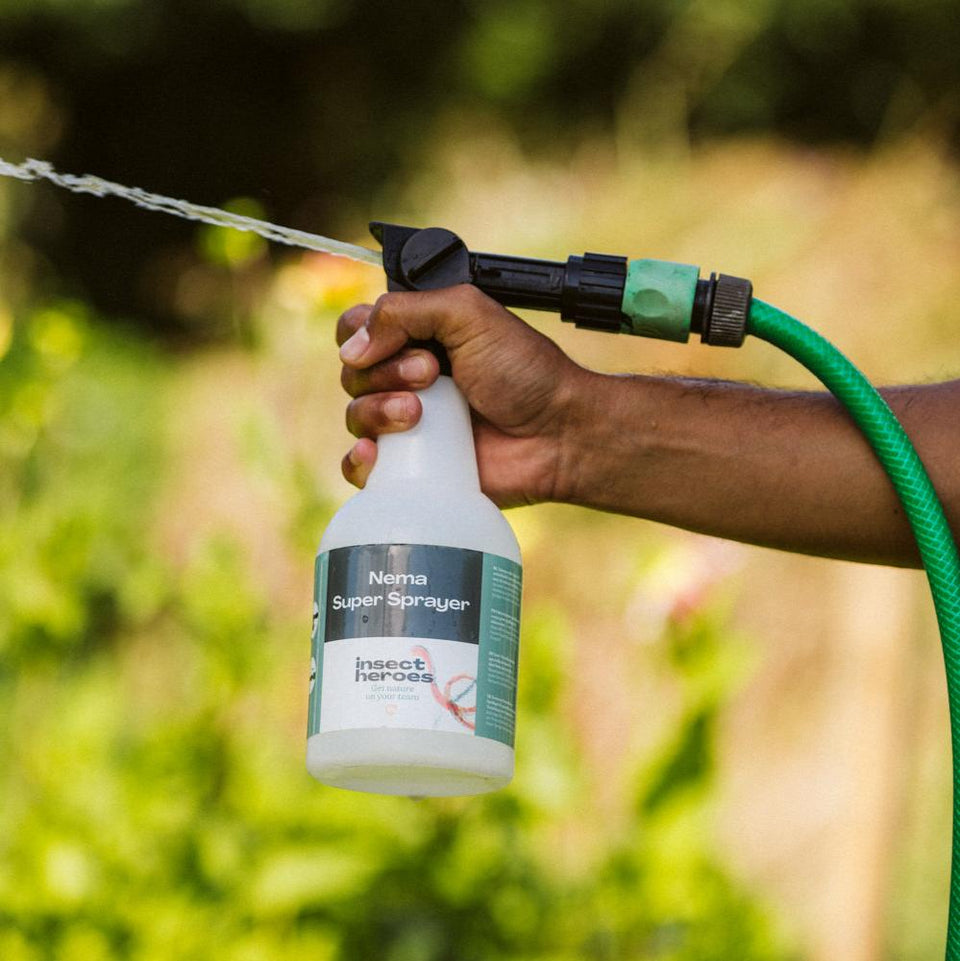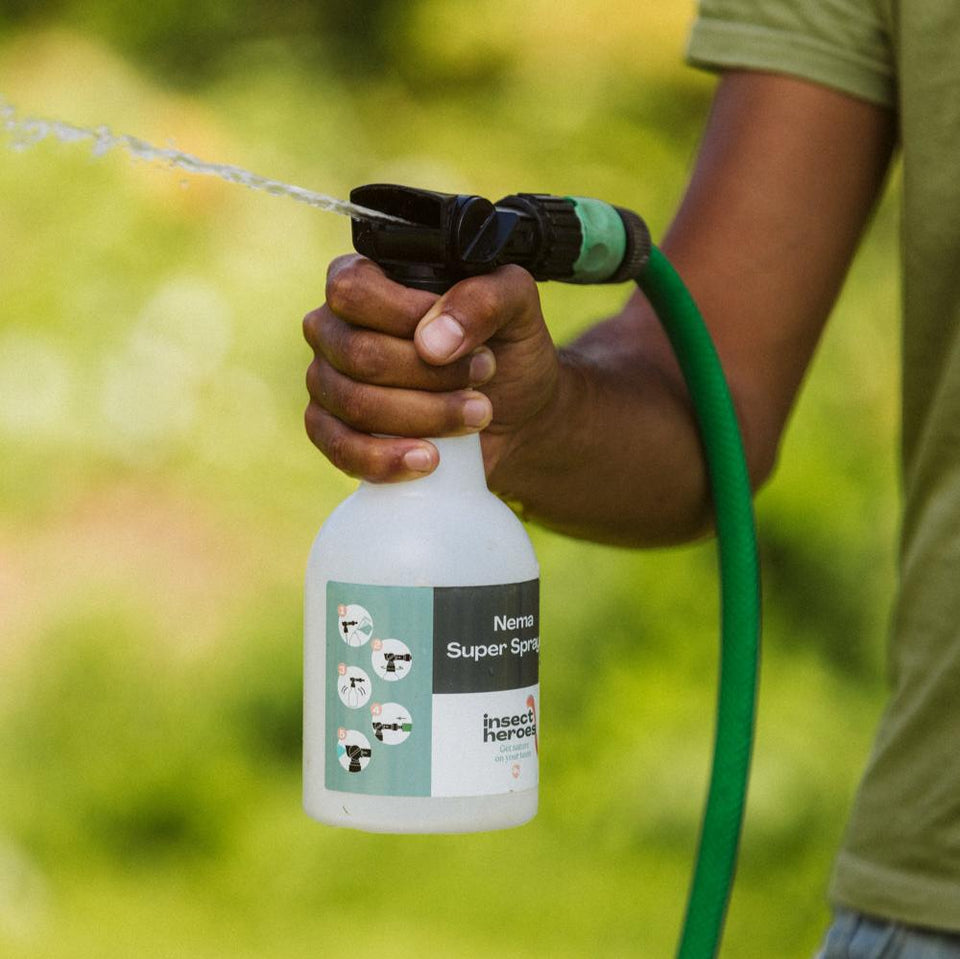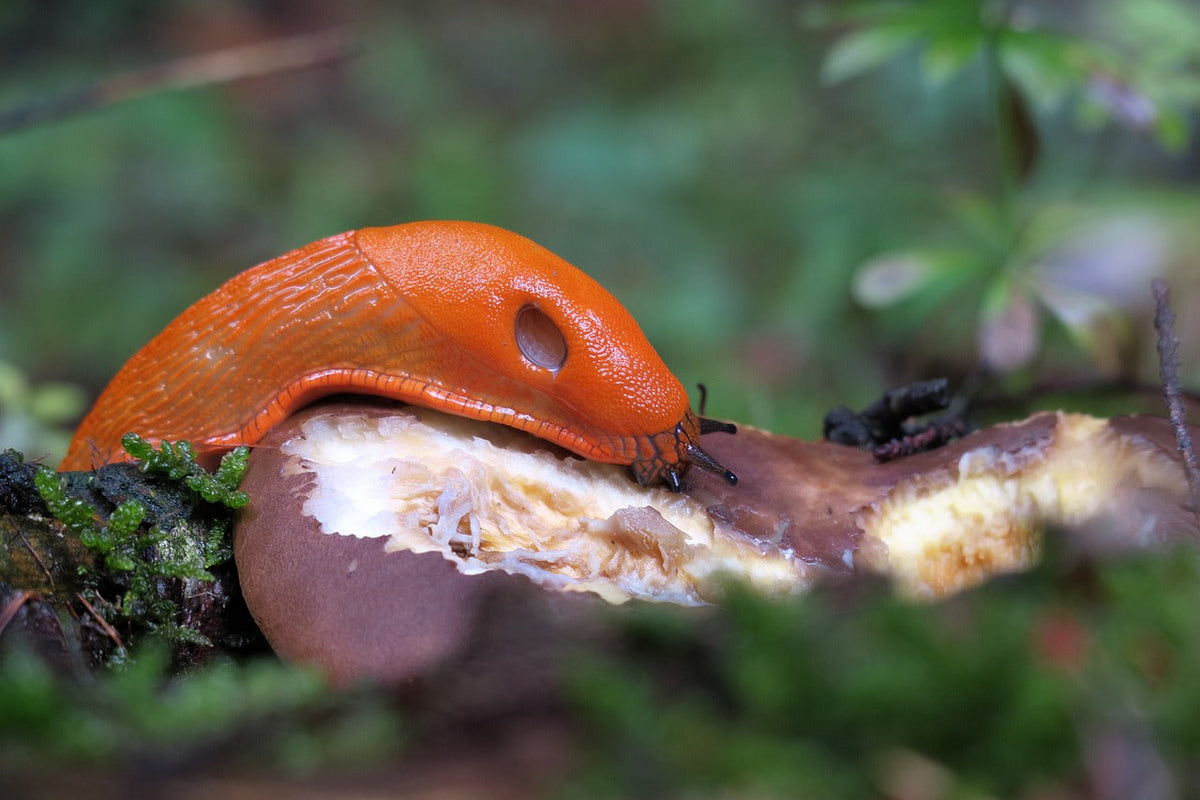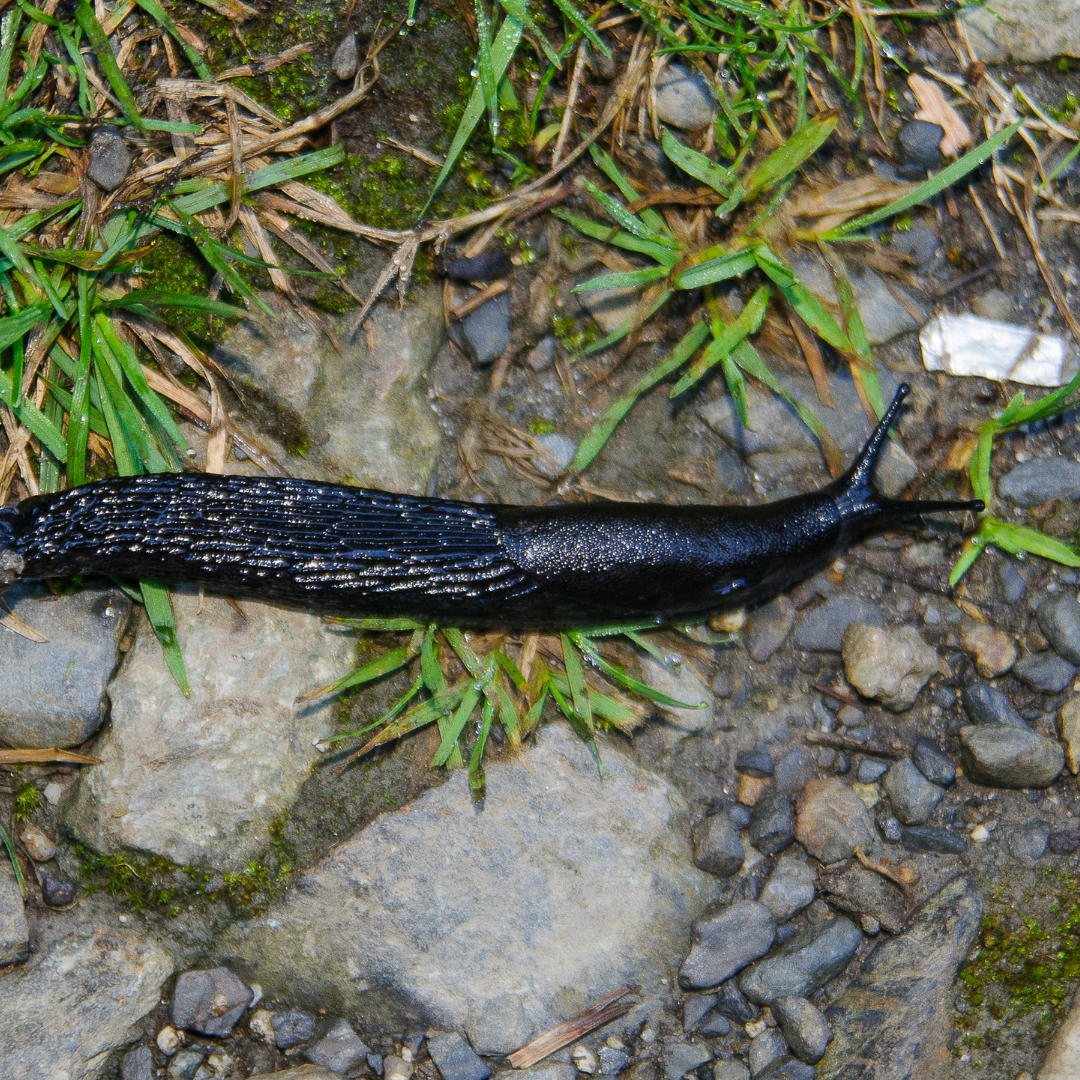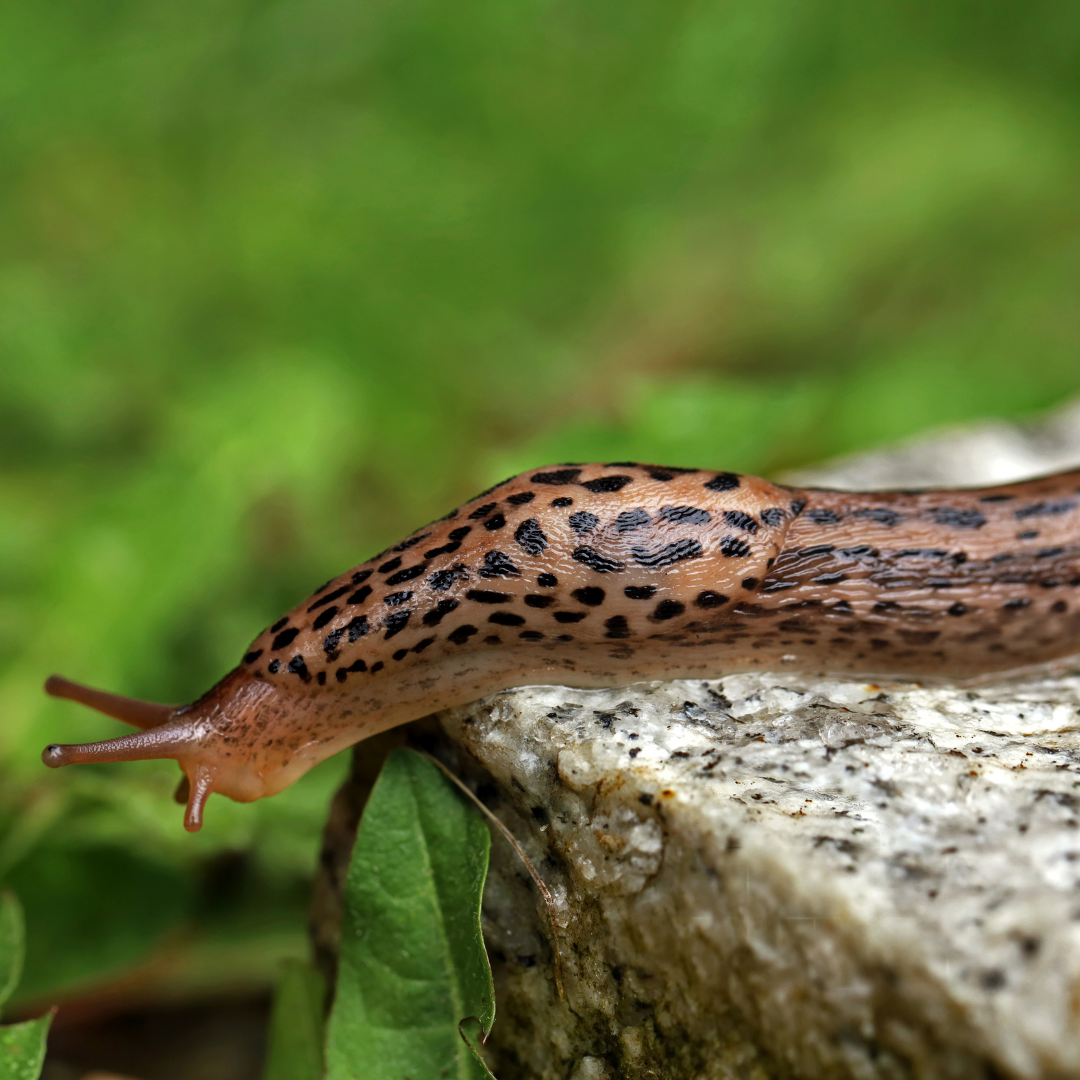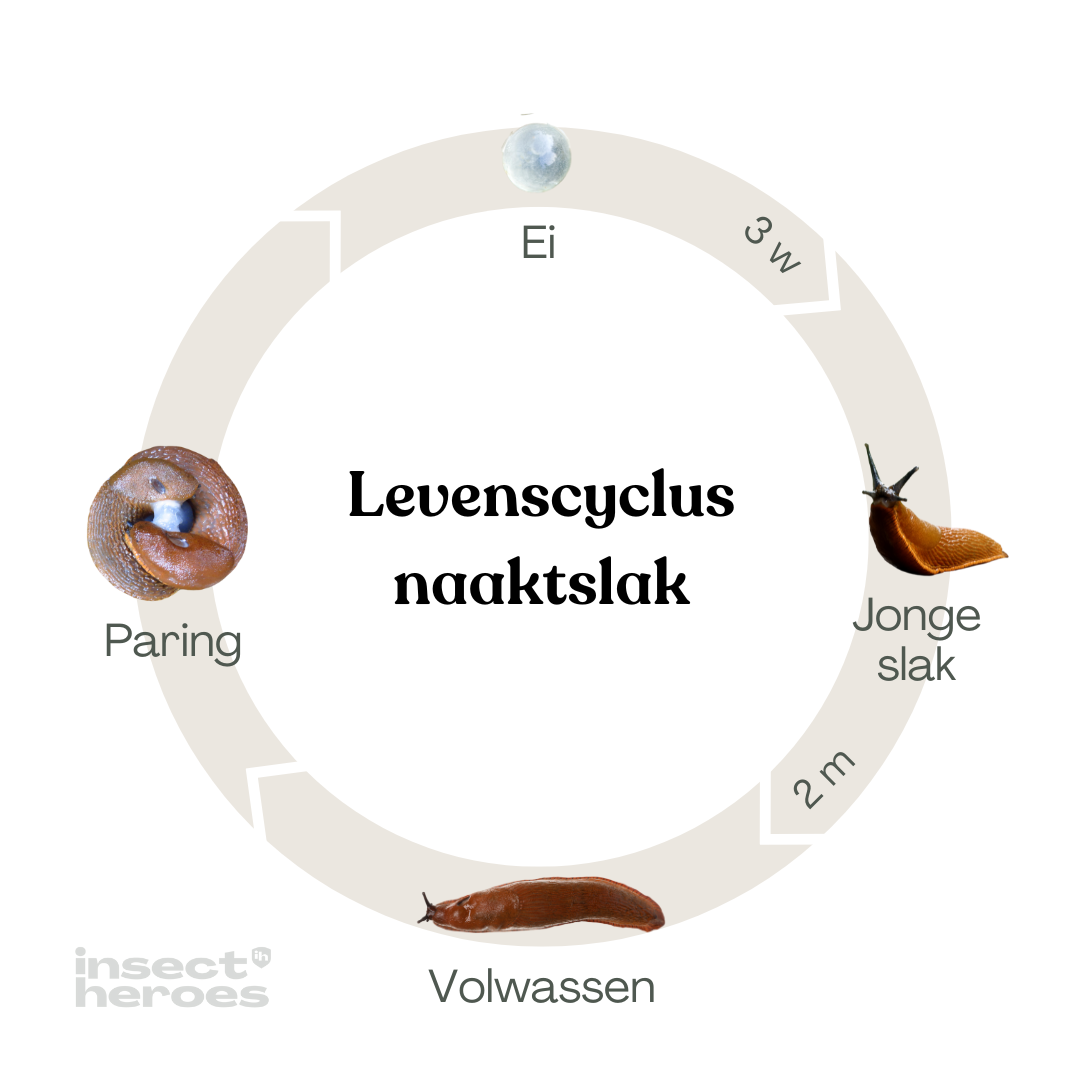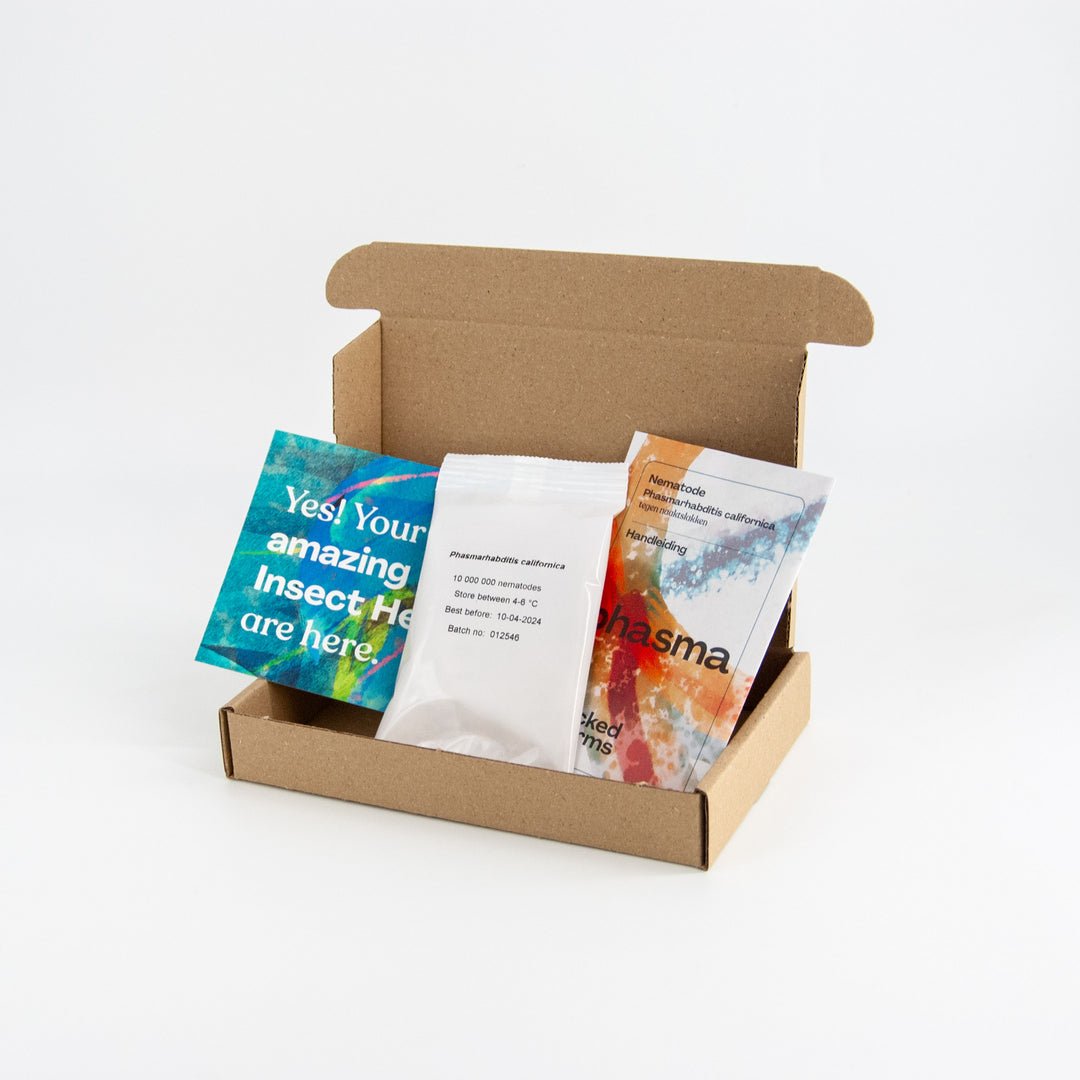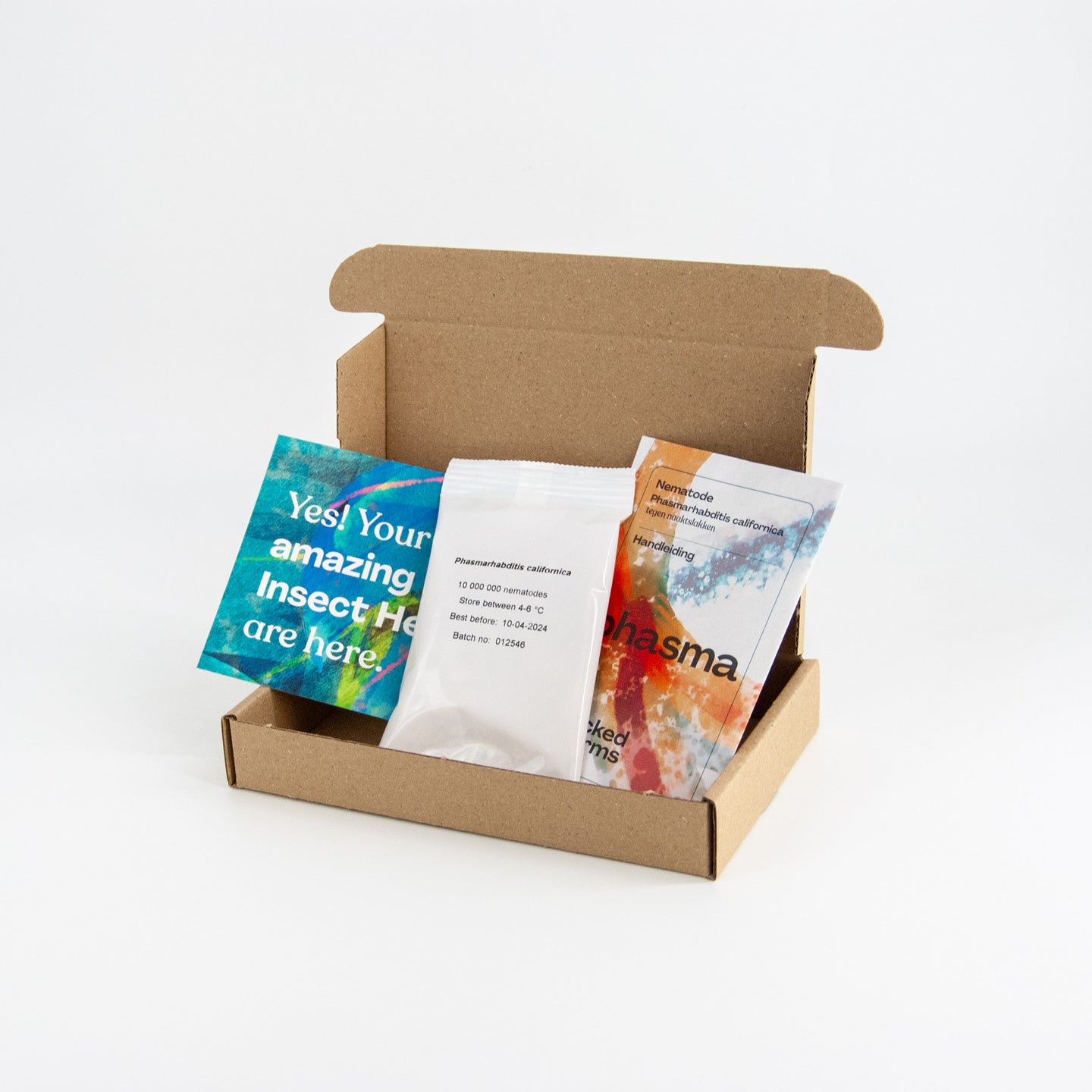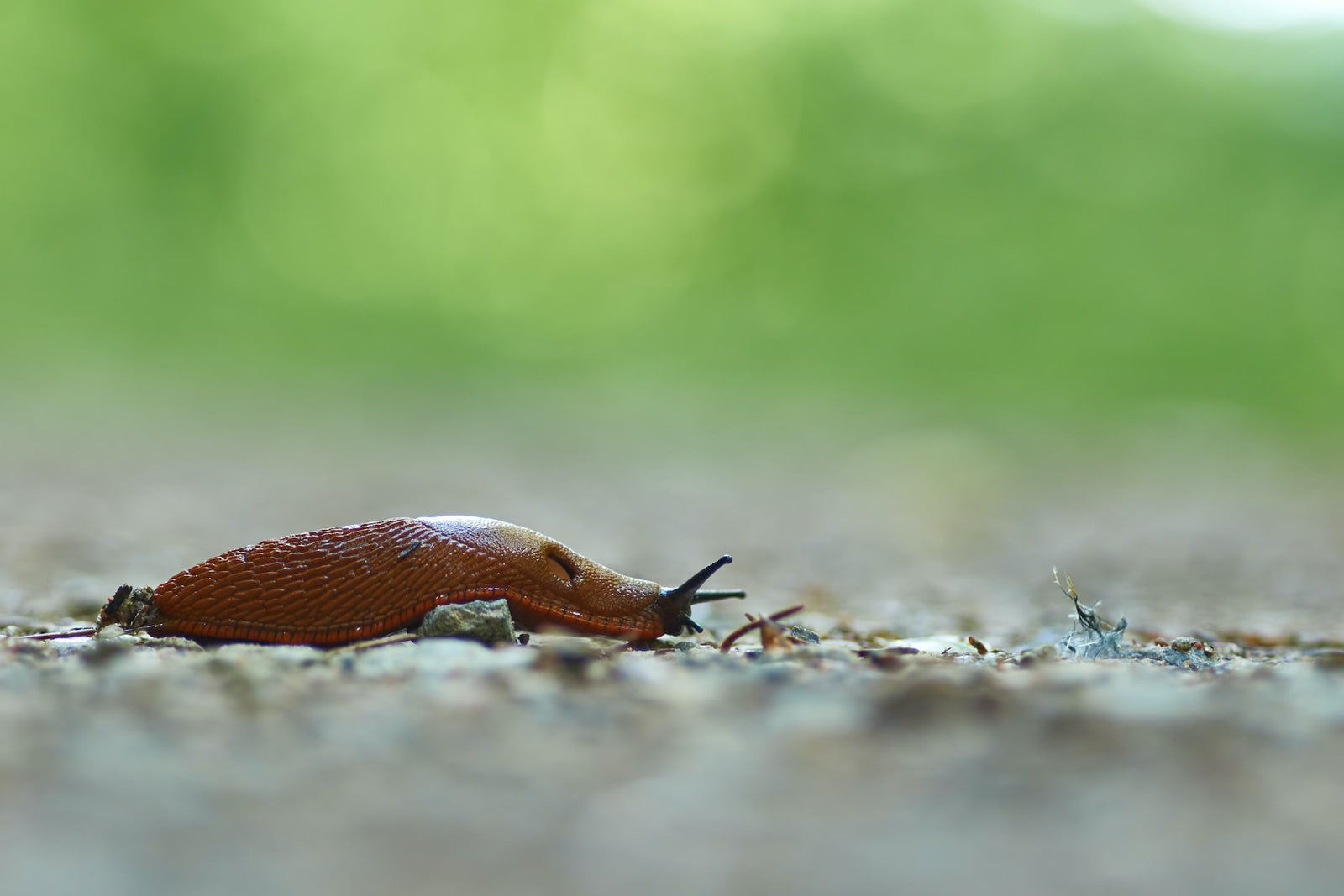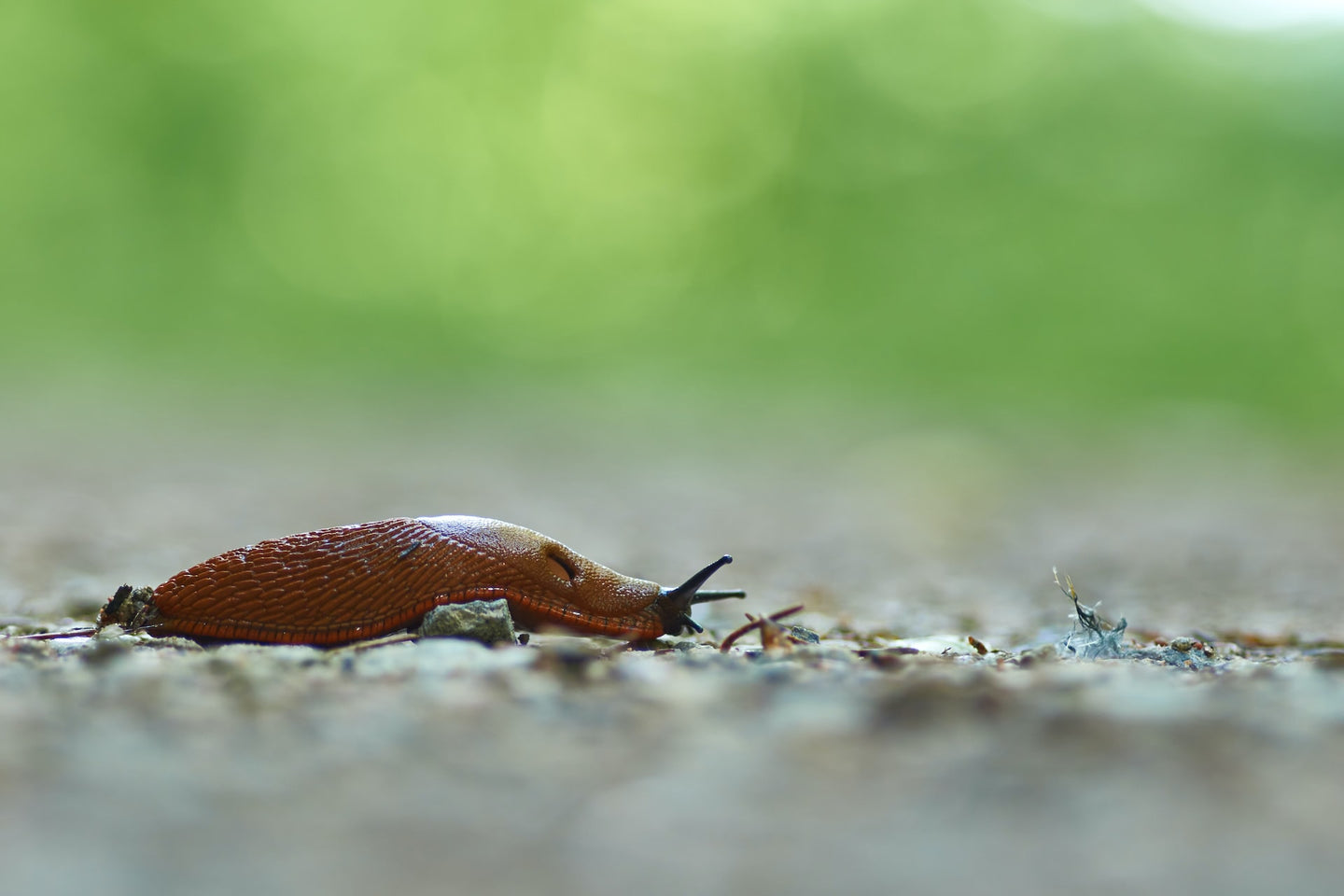Meest voorkomende slakken in de tuin
Overdag in de tuin kom je veel huisjesslakken tegen. De meest voorkomende soorten zijn de gewone tuinslak en de witgerande tuinslak. Huisjesslakken eten voornamelijk dode bladeren en zijn daardoor niet zo schadelijk in de tuin.
Naaktslakken daarentegen komen 's nachts of na de regen tevoorschijn, en brengen schade aan de planten aan.
De rode wegslak en de zwarte wegslak komen veel voor. De grootste naaktslak die je in de tuin kunt tegenkomen is de tijgerslak, een naaktslak met allemaal vlekjes.
Naaktslakken ontwikkeling
In het voorjaar, van maart tot april leggen naaktslakken eieren onder de grond in hoopjes van 20 tot 30 stuks. De eitjes zien eruit als kleine, witte pingpongballetjes. Na drie weken komen er kleine naaktslakken uit de eieren gekropen. Het duurt twee maanden voordat de naaktslakken volwassen zijn en kunnen paren. Naaktslakken worden hermafrodiet genoemd, dit betekent dat ze tegelijkertijd mannetje én vrouwtje zijn. Ze kunnen elkaar dus bevruchten en allebei eitjes leggen.
Naast het voorjaar leggen de naaktslakken ook in het najaar eieren.
Naaktslakken schade
Over het algemeen eten huisjesslakken dood plantmateriaal, erg nuttig in de tuin dus! De slakken die de meeste schade in de tuin aanbrengen, zijn de naaktslakken. Naaktslakken hebben een voorkeur voor grote, sappige bladeren, zoals die van de hosta, sla, kool of pompoen.
Naaktslakken bestrijden op natuurlijke wijze
Phasma aaltjes zijn een effectieve methode om naaktslakken te bestrijden. Deze kleine rondwormen zijn nauwelijks met het blote oog te zien en leven in de bodem. Wanneer ze een naaktslak tegenkomen, parasiteren ze de slak en geven ze een bacterie af die de slak doodt. Het mengen van Phasma met water en het aanbrengen ervan met een gieter op de tuinaarde of in de moestuinbak is een eenvoudige manier om ze toe te passen. Zo kunnen ze helpen om op een natuurlijke wijze de populatie naaktslakken onder controle te houden.
Naaktslakken voorkomen
Welke planten lusten slakken niet? Naaktslakken hebben een hekel aan planten met een sterke geur of een ruwe textuur. Enkele planten die naaktslakken vaak vermijden zijn: salie, lavendel, knoflook, ridderspoor, wolfsmelk, afrikaantjes, goudsbloemen en duizendblad.
Het is wel belangrijk op te merken dat geen enkele plant volledig onweerstaanbaar is voor naaktslakken, vooral niet als ze hongerig zijn en er geen andere voedselbronnen beschikbaar zijn. Het combineren van verschillende strategieën, zoals het gebruik van barrières, natuurlijke vijanden van slakken en regelmatig handmatig verwijderen, kan het beste werken om je planten te beschermen.
Andere manieren om naaktslakken te bestrijden
Slakkenval maken met bier
Huisjesslakken en naaktslakken worden aangetrokken door de geur van bier. Daardoor kan je slakken hiermee in de val lokken. Neem een bekertje of schaaltje en vul deze met bier. Elk soort bier kan worden gebruikt, zolang het maar alcohol bevat. Graaf het bakje of schaaltje zo in dat de rand gelijk ligt met de grond of net iets erboven. 's Nachts zullen de slakken naar de val komen, het bier in kruipen en verdrinken.
Nadeel van deze methode is dat andere beestjes ook in de val kunnen verdrinken en dat huisjesslakken ook worden gedood, terwijl deze niet veel schade veroorzaken.
Slakken weren met koperdraad of kopertape
Overal waar slakken komen laten ze een slijmspoor achter. Wanneer naaktslakken en huisjesslakken in contact komen met koper, krijgen ze door hun vochtige slakkenslijm een klein elektrisch schokje. Door kopertape of koperdraad om de plantenpotten of moestuinbakken te bevestigen, kan je slakken weren.
Let op! Naaktslakken kunnen zichzelf over het draad of de tape heen tillen. Zorg daarom dat de barrière breed genoeg is.
Slakken bestrijden met eenden of kippen
Heb je kippen in de tuin? Of misschien zelfs loopeenden? Voer de naaktslakken dan aan je huisdieren! Ze zullen je dankbaar zijn.
Slakken weren met eierschalen
Een methode om slakken te weren, is het gebruik van eierschalen. Breek de eierschalen en strooi ze rondom de plant(en) die je wilt beschermen. De scherpe randjes van de eierschalen zullen in het zachte lichaam van de slak prikken en als barrière dienen tegen de slak.
Een nadeel van deze methode is dat je het steeds opnieuw zult moeten herhalen. Ook werken de eierschalen niet altijd en zullen sommige slakken er toch overheen kruipen.
Weet je niet zeker van welke plaag je last hebt?
Bekijk de overzichtspagina met alle plagen.











































